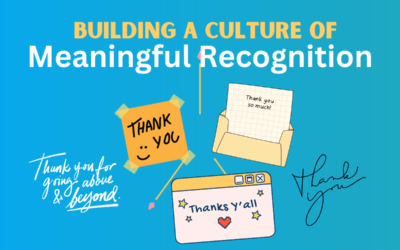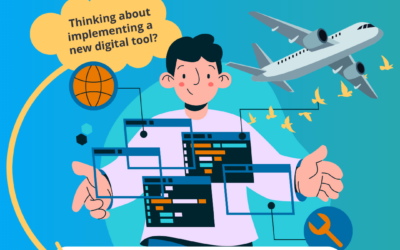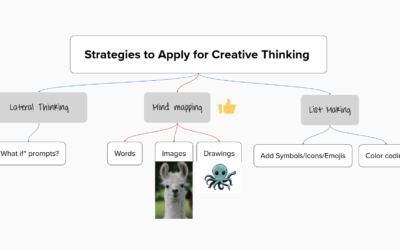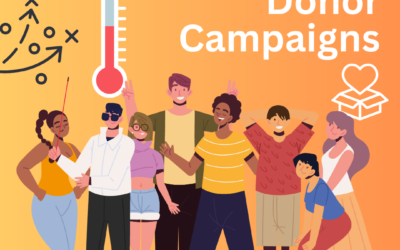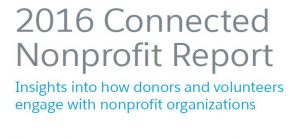 Salesforce.org released their 2016 Connected Nonprofit Report today, summarizing findings from a survey of both engaged and disconnected community members relating to how nonprofits do their work. There are some great insights into how people choose and support the work of charities, and while it’s not an academically rigorous poll, the information collected by Harris Poll confirms some trends seen elsewhere, and explores some new ideas.
Salesforce.org released their 2016 Connected Nonprofit Report today, summarizing findings from a survey of both engaged and disconnected community members relating to how nonprofits do their work. There are some great insights into how people choose and support the work of charities, and while it’s not an academically rigorous poll, the information collected by Harris Poll confirms some trends seen elsewhere, and explores some new ideas.
Allyson Fryhoff is a the Senior Vice President of Sales at Salesforce.org, and helped looked at the existing trends to where these ideas may lead forward-thinking nonprofits in 2017 and beyond. “I see three important issues from this data,” Fryhoff told Next in Nonprofits. “One, nonprofit impact is more and more crucial for supporters” making decisions about where to donate time and money. 90% of respondents agreed that understanding how a charity is using funds to bring about mission change is an important factor in getting involved. (More on measuring impact with Fryhoff on the Next in Nonprofits podcast). Creating a logic model and evaluation methodology is no longer aspirational, it’s a competitive differentiator and charities who understand this are going to be more successful in community than those who don’t know how to communicate impact.
“Two, it’s all about the technology to gather and understand data,” says Fryhoff. The survey shows 65% of people would do more – more money, more time – if the nonprofit understood their interests and concerns individually, and could respond to them more individually. The ability to do this is a not a pipe dream, but rather a choice charities make in what is important to them. Growing support – gaining more from existing donors and volunteers – is a goal many charities talk about, but they need to have tools in place to get the job done. “DonorsChoose is instrumented in their data,” Fryhoff cites as an example. She uses a car as an analogy here. “Cars have several types of instrument data collected and displayed separately – but that data can be aggregated in different ways to learn more than any single measure can show.” Gathering information with the intention of being able to segregate sets so nonprofits can recombine them later allows a more personal experience, and better community engagement.
Finally, the last big challenge is to start ramping up to machine learning. “AI (artificial intelligence) is really increasing for nonprofits in 2017,” says Fryhoff. Salesforce has Einstein, for example, and these tools are predicated on the ideas of impact focus and better data gathering technology. Anyone who has ever shopped for a book on Amazon has seen the results of machine learning. A quick search for one book title or idea leads to “other users have also purchased….” which more often than not is closer to what the user really needs than the search terms they initially typed. No person is behind that recommendation – the machine is learning from the vast amount of data it has available to display what matters. “This is a shift in thinking from a specific, one-directional path of user engagement,” according to Fryhoff. “This gives people a chance to come into a nonprofit mission in a variety of ways, and discover engagement in their own way.” Staff and volunteers for these organizations must learn to open up to alternative ways of thinking of user engagement, and let the AI tools help them see what really creates results rather than focusing on improving last year’s measures. After all, a charity which has emphasized just a change in one metric, without being able to see new paths, is likely to only make that one change and miss other, perhaps more tectonic, shifts.
There are many other interesting findings in the report, including the growth of mobile – both app and mobile-optimized web – as a critical section of user engagement. Charities that find their growth opportunities here are especially likely to do better with the future-oriented tactics of younger donors and volunteers. The current generation of key-supporters will always be looking to pass on the torch, and nonprofits that get started early will have a definite advantage in building trusting relationships over time.
